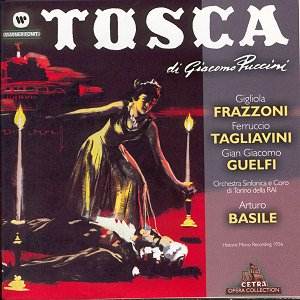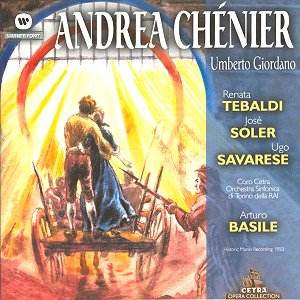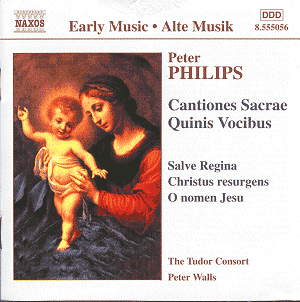 Composer: Giacomo Puccini
Composer: Giacomo Puccini
Works: Tosca
Performers: Gigliola Frazzoni (Tosca), Ferruccio Tagliavini (Cavaradossi), Gian Giacomo Guelfi (Scarpia), Antonio Zerbini (Angelotti), Alfredo Mariotti (Sacrestan)
Recording: 12.10.1956, Turin
Label: Warner Fonit 857387479-2 [2 CDs, 45.03, 69.39]
Puccini’s Tosca remains a cornerstone of the operatic repertoire, a work that intertwines the visceral with the sublime. First premiered in 1900, it reflects the composer’s mastery in merging dramatic narrative with lyrical beauty. This recording, featuring a stellar cast led by Ferruccio Tagliavini and Gigliola Frazzoni under the baton of Arturo Basile, captures the essence of Puccini’s orchestral and vocal writing, while also highlighting the historical context of a post-war Italy, where such performances were pivotal in reviving national pride.
Tagliavini, celebrated as a tenore di grazia, delivers a performance of both strength and delicacy. His portrayal of Cavaradossi is imbued with a youthful ardor that resonates deeply in the aria “E lucevan le stelle.” Here, the tenor’s honeyed tones evoke the bittersweet longing inherent in the character’s fate. The lyricism of Act I is particularly notable, as Tagliavini navigates the text with an interpretive nuance that illuminates moments often overlooked. The phrase “Qual occhio” exemplifies his ability to balance lyricism with dramatic intensity, showcasing a firm yet tender vocal production.
Frazzoni, though less recognized than her illustrious contemporaries, brings a compelling depth to the role of Tosca. Her voice, while not as monumental as that of Callas, possesses a rich tonal quality that serves the character’s emotional range well. In the first act, her alternating expressions of jealousy and love are vividly portrayed, particularly during the duet “O dolci mani,” where her vocal shading adds layers to the dramatic tension. The interpretive choices here reflect a deep understanding of Tosca’s complex psyche, allowing her to navigate the character’s emotional turmoil with authenticity.
Gian Giacomo Guelfi’s Scarpia is marked by a resonant voice that conveys a believable menace without veering into caricature. His portrayal eschews overt villainy in favor of a more nuanced interpretation, allowing for a psychological depth that enhances the dramatic stakes of the opera. The interaction between Guelfi and Frazzoni in the second act is a highlight, particularly in the chilling moments of “Va, Tosca,” where the tension is palpable.
The Turin RAI Orchestra, under Basile’s direction, offers a performance that is both clear and dynamic, albeit with a slightly distant orchestral placement that may feel unfamiliar to modern ears. The clarity of sound, however, allows for the delicate textures of Puccini’s score to emerge, particularly in softer passages where the orchestral dolcezza shines through. Basile’s conducting style reflects a balanced ebb and flow, ensuring that the singers are given space to express themselves without overwhelming the drama. This recording reveals a commendable fidelity to Puccini’s intent, with the orchestra supporting the vocal lines effectively.
While comparisons to the legendary Callas/Di Stefano recording from 1953 are inevitable, this interpretation stands on its own merits. It offers a different perspective on the roles, and for those interested in the broader landscape of Puccini’s interpretations, it is an essential addition. The recording’s sound quality, while reflective of its era, has been handled adeptly, with the voices presented with commendable presence and dynamic range. Listening through headphones enhances the experience, revealing the subtleties of the orchestration and vocal interplay.
The historical significance of this performance, coupled with the interpretive strengths of the cast and the competent orchestral support, makes this recording a valuable document of Puccini’s Tosca. It serves both as an introduction for newcomers and a complement to established recordings, enriching the listener’s understanding of this operatic masterpiece. The combination of robust performances and thoughtful direction solidifies its place in the pantheon of Tosca recordings, deserving a spot alongside the classics.



